Snook Fishing 101: A Beginner's Guide
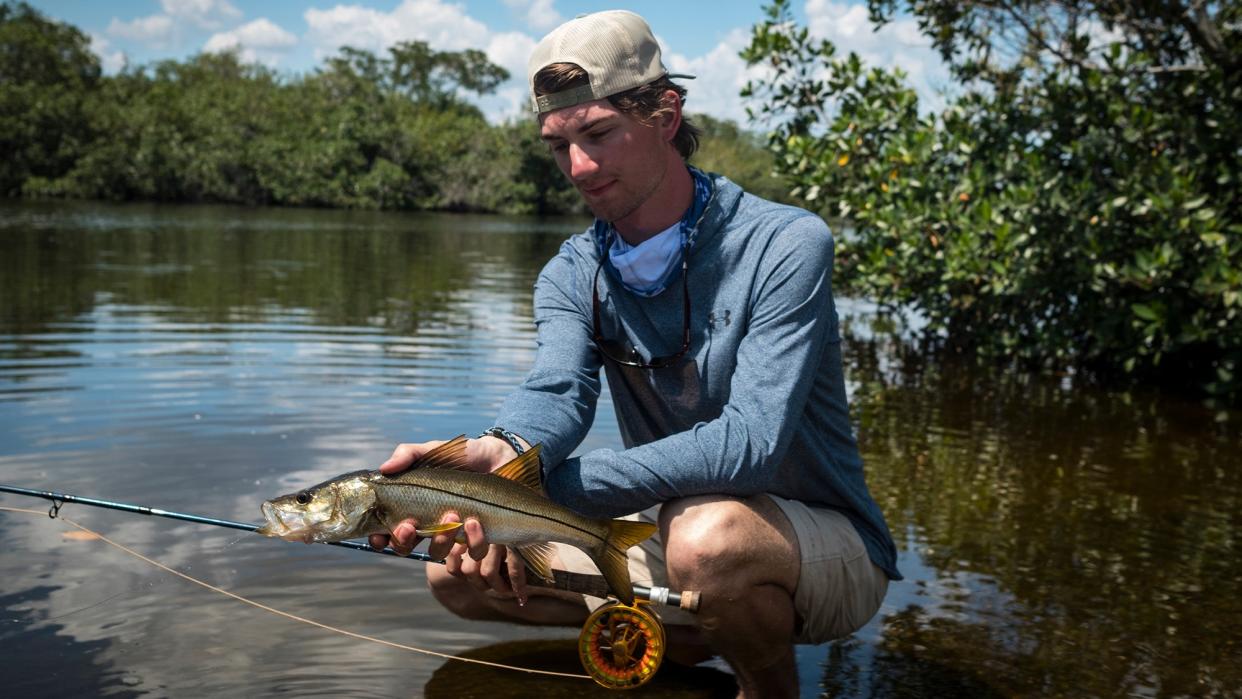
In many ways, snook are the ultimate gamefish. They are extremely aggressive, fight hard, and grow to impressive sizes. Snook eat topwater baits, subsurface lures, and flies, offering something for every type of angler. Not to mention, they can be chased year-round in the Sunshine State. While you can catch snook in a few other areas along the Gulf Coast, Florida is the mecca—whether you want to catch a bunch of snook or specifically target trophy-caliber fish.
Most commonly found in inshore fisheries, snook are one of the most accessible saltwater species in Florida. They can be pursued with conventional tackle or fly equipment from flats boats, bay boats, center consoles, kayaks, paddle boards, and on foot. But no matter how you fish for snook, understanding their habitat and food sources, plus the effects of tides and current, is crucial for success. This beginner's guide to snook fishing walks you through basic snook biology, behavior, and what habitat to look for in order to catch a giant.
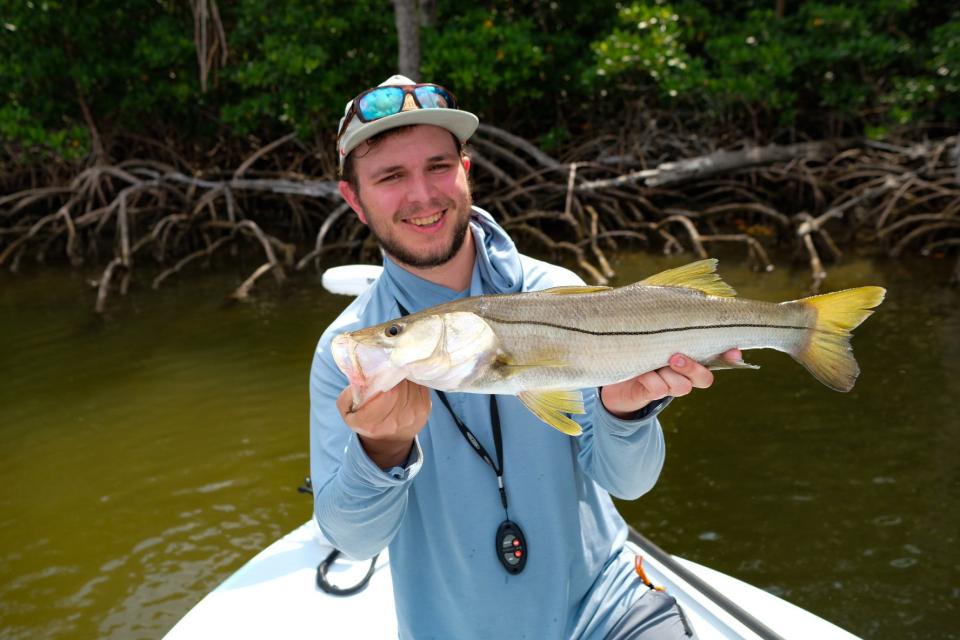
Appearance and Biology
Snook are known for their bucket mouths and distinct black lateral line. But many anglers don’t realize that there are five different subspecies of snook in Florida: the common snook, the small and large-scale fat snook, the swordspine snook, and the tarpon snook. The common and fat snook are the most abundant and largest of these five subspecies.
Common snook are large-bodied fish that can grow upwards of 50 inches and 40-plus pounds. They are green to silverish in color with a white underbelly. In addition, they have a distinct yellow pelvic fin and a jaw protruding past the eye. Fat snook resemble common snook but are much smaller, topping out at 30 inches. As their name implies, they exhibit a deep body shape, and their jaw stops with the center of their eye. These are the two most common subspecies caught by anglers.
While snook are saltwater fish, they can also survive in freshwater. As a former fisheries biologist, I’ve captured snook as far inland as Lake Okeechobee on multiple occasions for different studies. The only limiting factor for snook distribution is water temperature. Anything below 60 degrees, and they can no longer survive. In winter, snook along the coast will push south from their summering grounds in search of warmer water temps.
All snook are born as males. As they near 20 inches, some will change sex to female and continue to grow. Every year, beginning in May and ending in September, snook will congregate in large schools in inlets, reefs, and passes. Here, they will spawn before dispersing to their usual haunts.
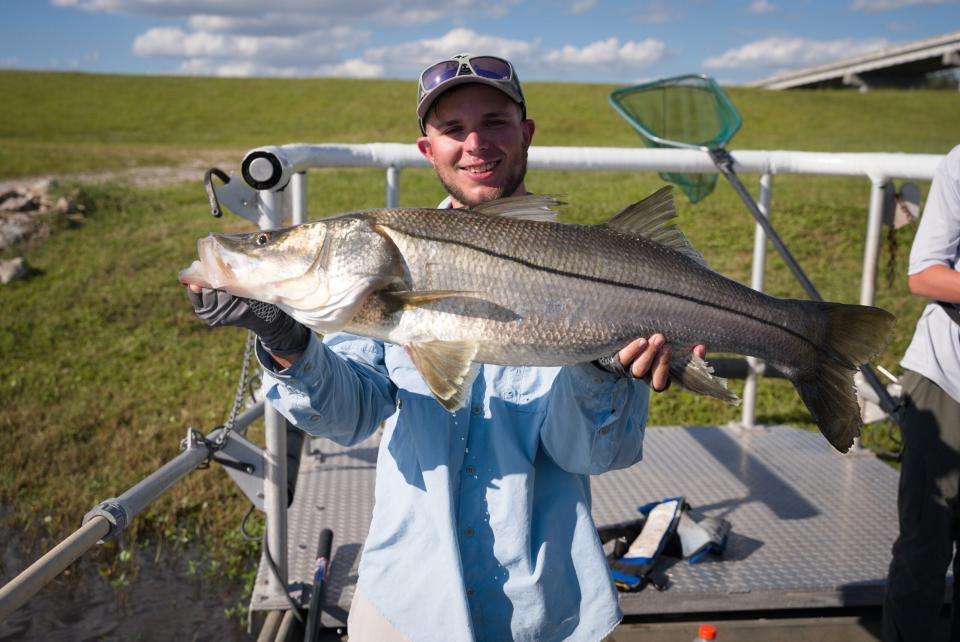
History and Habitat
In the 1950s, Florida implemented the first regulations to manage snook. Soon after, in the 1980s, drastic measures were put in place to protect a declining population. Now, the biggest battle for snook populations is water quality and habitat degradation. In 2010, a prolonged cold snap sent water temps plummeting into the 50s and 40s for a ten-day period. The result was a massive die-off of Florida’s inshore fish, with snook taking the brunt of the hit. Estimates ranged as high as a million snook died during this event. Snook continue to battle negative environmental factors like red tide, leading to decreased numbers throughout the state.
While snook fishing may not live up to the legends of the past, it’s still pretty great if you know where to look. They are a true inshore species, sticking to near-shore waters throughout Florida. Depending on water temperatures, snook can be found as far north as Cedar Key on Florida's west coast and as far north as St. Augustine on the east coast.
As far as habitat, snook love structure. In urban areas, they will seek refuge under docks, seawalls, pilings, inlets, and bridges. Here, they use the current to their advantage and wait for food to come by. In more natural environments, snook can be found throughout flats, drop-offs, mangrove edges, and channels. They move around with the tides, so if they aren’t there on low tide, they may be there on high.
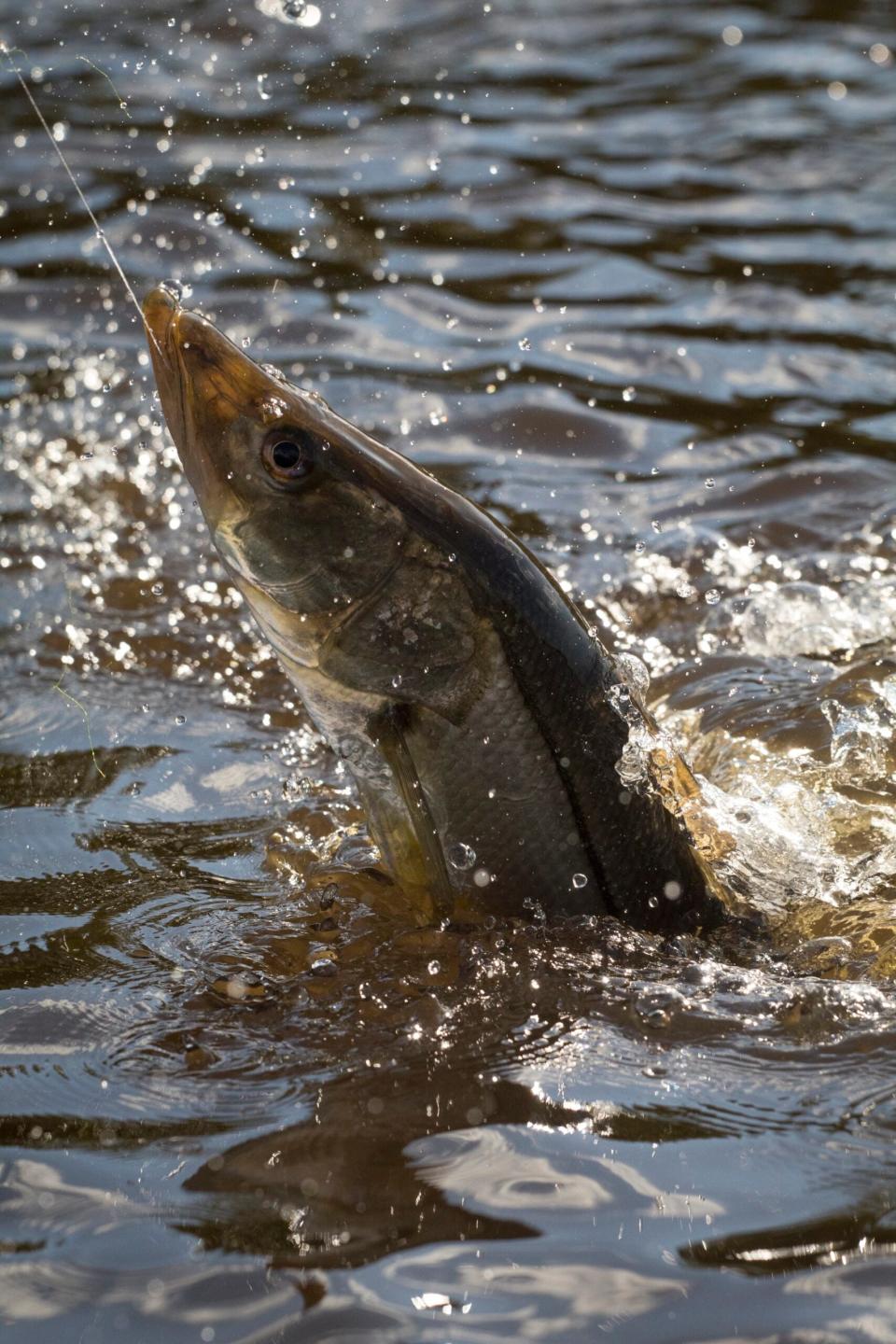
Snook Fishing: Tips and Tactics
Snook are so popular among anglers for a few simple reasons: they fight hard, will readily eat lures, flies, and live baits, and grow to large sizes. Above all, they are easily accessible to anglers. Whether on foot or by boat, chances are you can find a snook willing to bite. Here’s how to do it.
Inshore
The options for targeting snook are endless, from the intercoastal waterways of Florida’s east coast to the vast bays and flats of the Gulf. Anglers have the option to sight fish or blind cast for these fish. For sight fishing, target shallow water flats and waking fish. The key to spotting fish is to look for dark shapes and shadows. If you think it’s a fish, chances are it is. Depending on the conditions, this can also mean seeing large fish under the surface regardless of water depth.
My go-to lure is some sort of topwater bait like a spook or the NLBN Lil Mullet. These baits make a lot of commotion on the water and mimic a struggling mullet. Put a healthy lead on your target, cast the lure, and wait for the strike. Speed up the lure if a fish is following but won’t commit. This often kicks their predatory instinct into overdrive, and they’ll pounce on it. For fly anglers, sight fishing presents plenty of opportunities. Small baitfish flies and shrimp patterns will consistently draw strikes, even from spooky fish. And when all else fails, a live mullet pitched at these fish will do the trick.
If the conditions aren’t ideal for sight fishing, blind casting is equally effective. Look for drop-offs or structure where fish are likely hiding to ambush prey. If you’re throwing artificials, jig heads are your friend. Shrimp baits and swimbaits are preferred, but hard baits will also draw strikes. Just make sure they are getting to the right depth for the water you are fishing. Snook like to hug the bottom and live bait excel in deep water scenarios. Pitch out a bait, let it soak near the bottom, and wait for a thump.
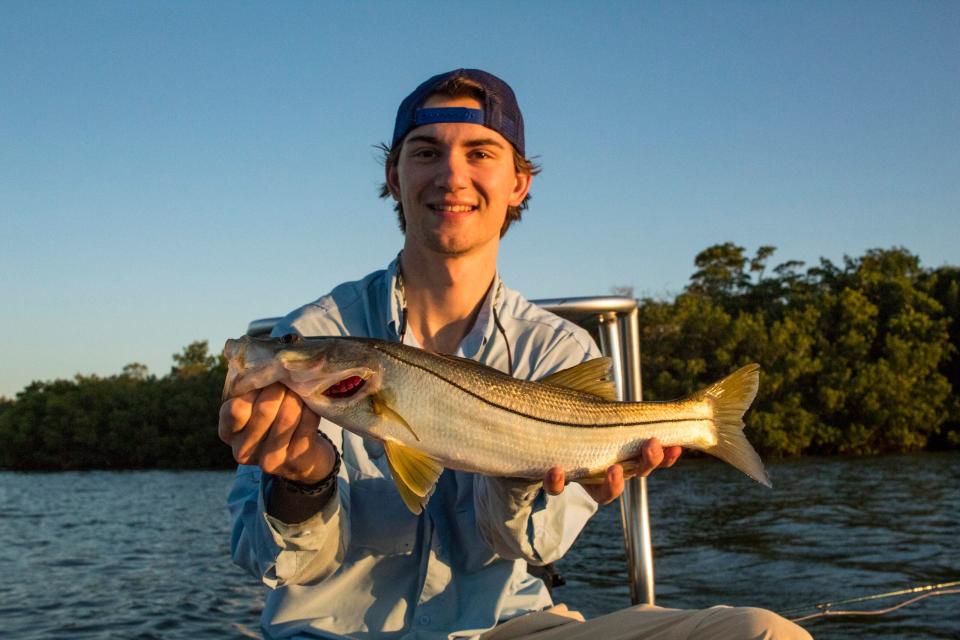
Land-based Snook Fishing
Anglers limited to foot shouldn't be discouraged. Snook are found in both fresh and saltwater and have an affinity for man-made structures, which are often accessible by land. Some of my go-to spots for big snook on foot are piers, bridges, spillways, and inlets. These areas do get a fair bit of foot traffic, and the fish can be spooky. If that’s the case, a live bait is your best friend. Pinfish are a great bait choice and readily available at most shops, but if available, mullet and croakers are always my preferred choice.
These areas typically have heavy currents, so make sure to use ample weight to hit the bottom and stay in the strike zone. Snook usually don't leave these structures, but they are affected by tides. Learning where the fish sit on particular tides is the most difficult part of the puzzle, but as long as you have moving water, chances are there is a hungry fish waiting.
Florida's west coast also offers exceptional beach fishing for snook. The mild-mannered gulf seas and endless sand beaches draw snook into casting range. The best time of year for this is spring and early summer. During these months, snook begin to spawn, and big groups of fish make their way into the beach. The water is typically fairly clear, offering excellent sight fishing. Whether fly casting or conventional fishing, walk the beach and search for bowls and sandbars. Snook will sit in deeper areas and wait for bait to come to them.
Snook Fishing at Night
When the sun goes down, snook fishing comes alive. There is no better time to consistently fool wary fish and put numbers on the board. One of my favorite ways to pursue snook at night is under dock lights. The concept is simple: lights attract bait fish, and bait attracts snook. You’ll see the fish in the lights right away, so if there are no fish, look for another light. While you may see a bunch of actively feeding fish in a light you have to be precise. An errant cast will spook them, and they will stop eating.
Start by casting on the edges of the lights where the fish have a hard time seeing your lure and work into the center. This is also my favorite time to throw flies. An 8-weight and light leader can softly land a fly without spooking fish. If the fish start blitzing, this is your chance for a “free” cast. Throw your fly into the chaos and strip fast.
For big fish, target bridges at night. The preferred lure is a flair hawk jig ranging from 1 to 3 ounces, depending on the amount of current. Cast the jig around bridges, targeting shadow lines from overhead lights. Let the jig sink close to the bottom and slowly reel it back. This may seem counterintuitive for a jig, but it works. The slower you reel it, the more strikes you’ll get. Make sure your tackle is up to par. This means heavy rods and oversized reels to pull fish away from the bridges before they wrap you around a pilon. When night fishing, don’t be afraid to stay out late. All my biggest fish have come between 2 a.m. and 4 a.m.

Rules and Regulations
Snook are regulated as a slot fish, meaning they must be within a certain size range to keep. The slot on Florida's Southeast coast is 28 to 32 inches, but this range varies based on region, so be sure to check the regulations. To harvest a snook, anglers must possess a snook permit and are limited to one fish per day. In addition to the slot, there are designated seasons where anglers can harvest snook. Regardless of seasons, if you hook a fish and a shark eats it, leave that spot and fish somewhere else. There may be another snook in the area, but if the sharks have caught on, your odds of landing another fish are slim.

